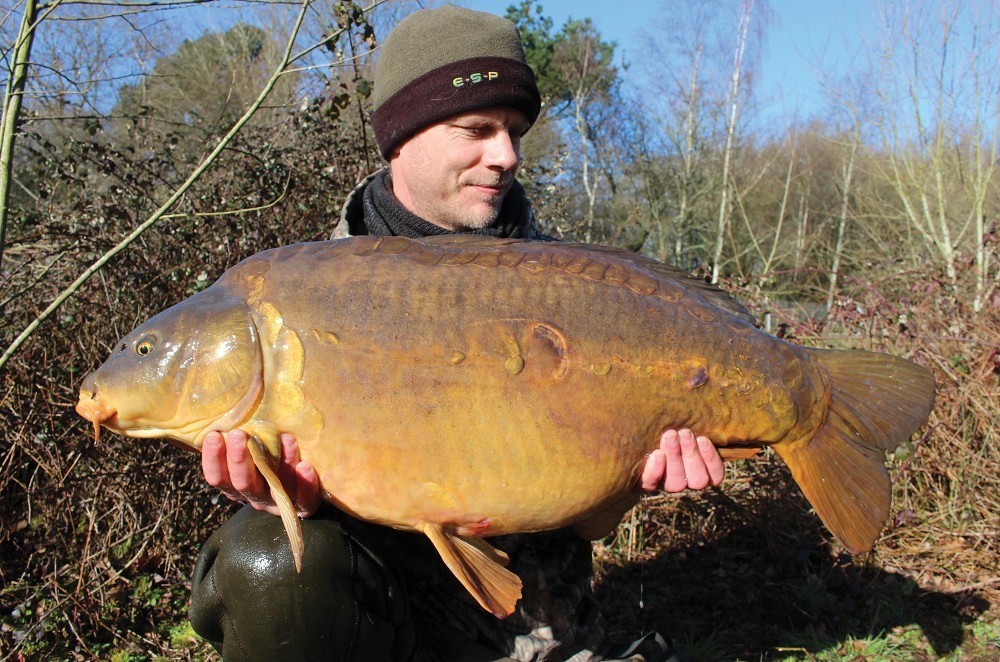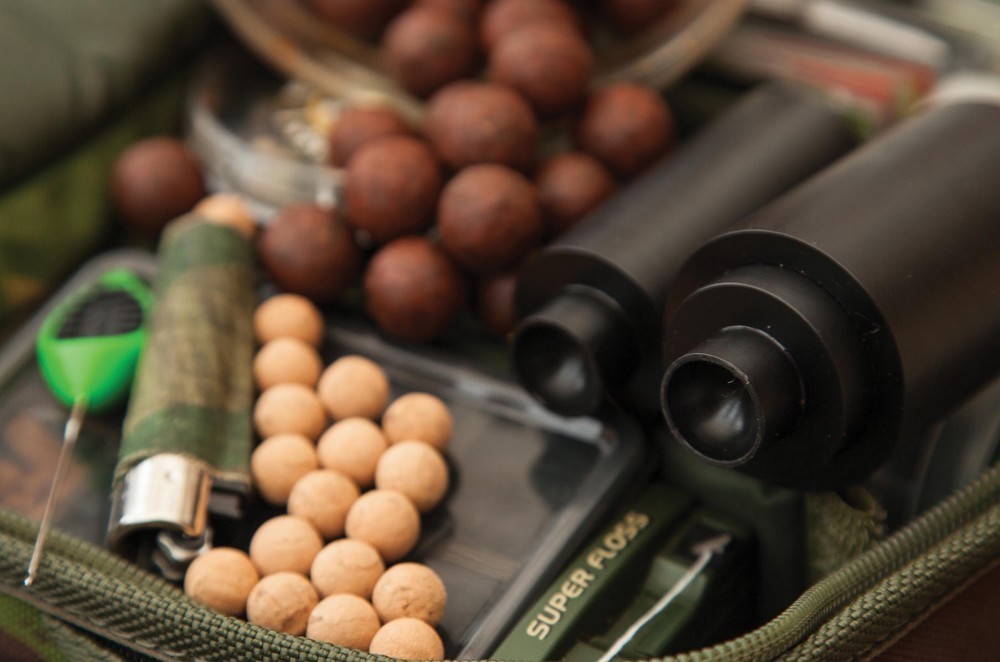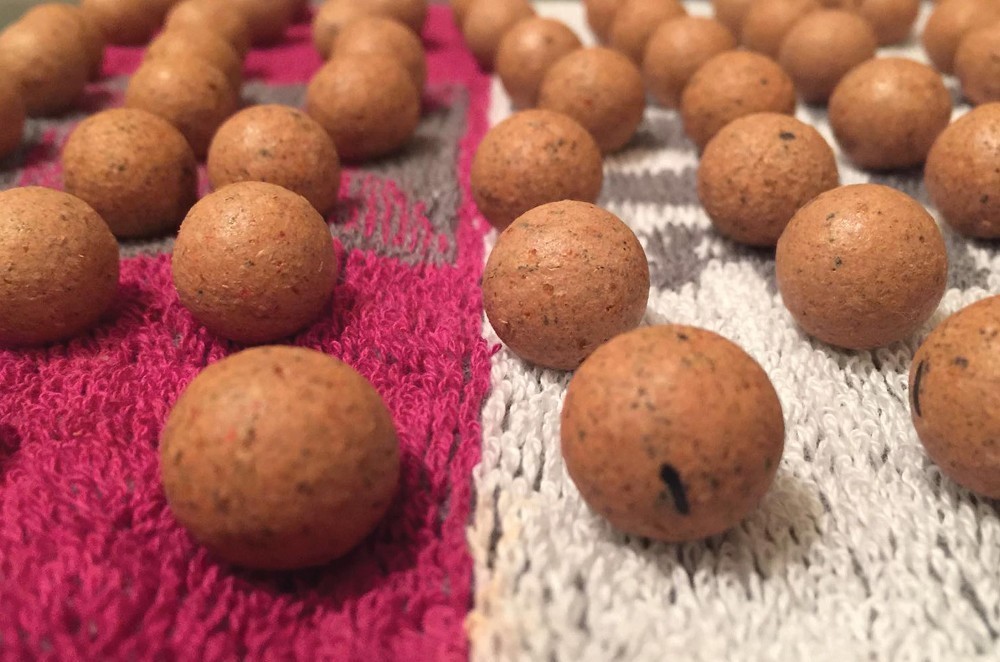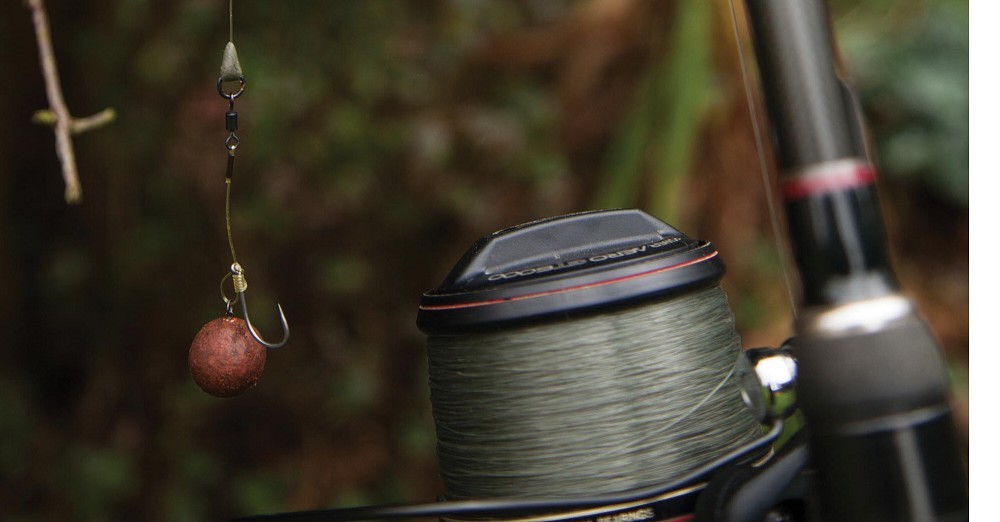
CC Moore Corkball Roller
CC Moore have launched one very clever corkball hookbait making device. Here, creator Greg Alexander explains how it all came about…
My first taste of carp fishing came in 2002. Using borrowed gear I caught a twenty-pound mirror from a lake that only contained eight mirrors amongst a reasonable stock of commons and the whole carp bug bit like a mozzie on a pub-crawl! After the standard few years on easier lakes, getting bites and learning, I started fishing on fairly tricky low stocked waters where the need to leave baits in place for long periods was paramount for that early morning bite time. The problem I started to find was that ready-made pop-ups and air-balls became saturated quite quickly and, when reeling back in, never had the same buoyancy as when you’d tested them in the margins the afternoon before, meaning my previously balanced rigs were just not effective after several hours in the water. To remedy this, I always used corkball pop-ups and corkball wafters for my boilie fishing and have nearly always made my own to ensure my hookbaits are consistently super-buoyant and my rigs are balanced the whole time they’re fishing.
My way of thinking with hookbaits for larger fish is generally to fish quite large baits (15mm and above) with big hooks – 4’s, 6’s and even 2’s! Crude? Yes, very, and definitely not stalking rigs, but in ten-foot of water before the sun is high in the sky, even on crystal clear pits, light levels in the water are very low and you can get away with it… Try spitting a size 2 line-aligned out Mr. Mirror!
Fishing on clear spots over bait I will always present my hookbait with the hook lying flat either with a snowman incorporating an air-dried bottom bait and a corkball pop-up or a single corkball wafter (18mm and above) balanced with a split shot on the Hair if required. I rarely use pop-ups for fishing over bait, and especially on clear spots, but for all single hookbait fishing and for single cast fishing where your assumption of the bottom is determined by the ‘donk’ of the lead, corkball pop-ups are a must.
 More people started fishing the big fish, low stock waters which meant leaving rigs in for long periods and this meant that corkball baits with guaranteed consistent buoyancy came to the forefront of boilie fishing
More people started fishing the big fish, low stock waters which meant leaving rigs in for long periods and this meant that corkball baits with guaranteed consistent buoyancy came to the forefront of boilie fishingThe popularity of the Chod and Hinged Stiff Rigs that require a bait to hold up large hooks, and the fact that more people started fishing the big fish/low stock waters which meant leaving rigs in for long periods, meant that corkball baits with guaranteed consistent buoyancy came to the forefront of boilie fishing. Unlike air ball and pop-up mix made hookbaits, corkball pop-ups can of course also be made from the same paste as your freebies which, when fishing for big, wary, pressured fish is another benefit that can give them more feeding confidence and certainly always made me more confident of getting a bite.
The problem I found with sourcing corkball pop-ups was that shop-bought tubs were always very expensive and, with many companies, their quality could never be guaranteed.
 I started fishing on fairly tricky low stocked waters where the need to leave baits in place for long periods was paramount for that early morning bite time
I started fishing on fairly tricky low stocked waters where the need to leave baits in place for long periods was paramount for that early morning bite timeAs an alternative, rolling them myself was not only time-consuming but it was also very difficult to get them consistently spot on for my rigs; and would be especially so for a ‘beginner’. However, I knew that doing so would allow me to tweak my hookbaits and maybe add more liquid or different ingredients so they were personally tweaked for my approach really and help create that all important edge that can convert a chance into a bite.
However, the biggest problem I always encountered when rolling my own corkball pop-ups and wafters by hand was that, even with each one being lovingly rolled to your own standards, it’s very difficult to roll them all exactly the same size. The precise amount of paste for each bait needs to be measured out and, even then, when rolling them, the corkball is not always centred often creating an air gap between the cork and paste that results in the hookbait not lasting as you need once immersed in water.
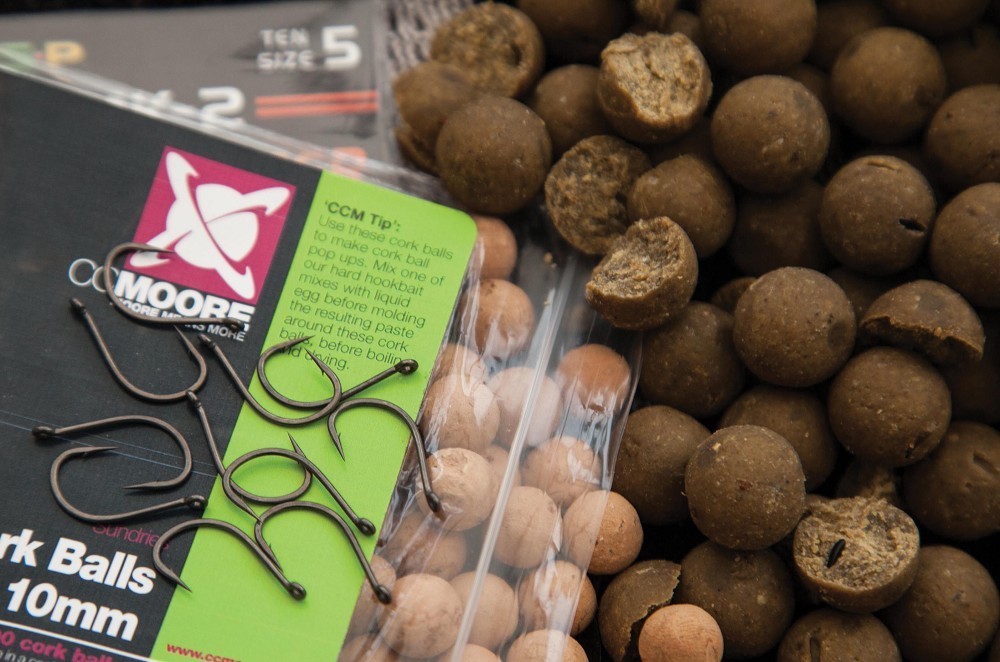 My way of thinking with hookbaits for larger fish is generally to fish quite large baits (15mm and above) with big hooks: 4’s 6’s and even 2’s!
My way of thinking with hookbaits for larger fish is generally to fish quite large baits (15mm and above) with big hooks: 4’s 6’s and even 2’s!Furthermore, you’re also limited to the type of paste you can wrap around a corkball, with glutinous, crumbly or fluffy mixes like pop-up pastes being virtually impossible to be effectively wrapped around a corkball and be rolled into high quality hookbaits by hand… until now that is!
I always wondered why there weren’t already products available to help people make their own at home and following research found there were a few available but nothing that made a significant difference in overcoming the major problems faced when hand-rolling.
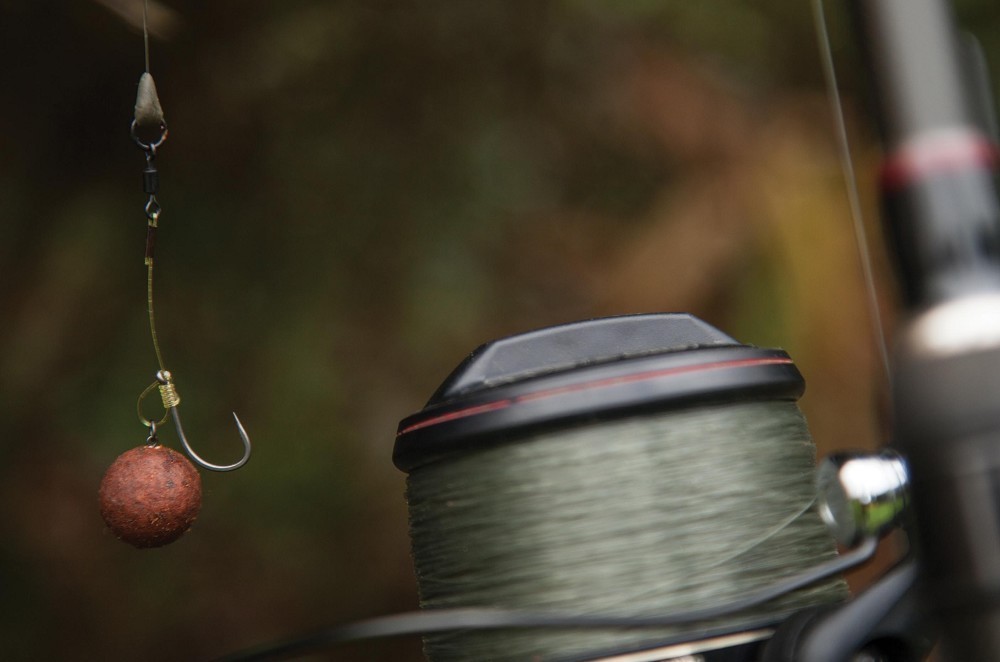 For all single hookbait fishing and for single cast fishing where your assumption of the bottom is determined by the ‘donk’ of the lead, corkball pop-ups are a must
For all single hookbait fishing and for single cast fishing where your assumption of the bottom is determined by the ‘donk’ of the lead, corkball pop-ups are a mustThis new rolling tool all came about as a result of a chance conversation with a friend many years ago, where he showed me a set of presses he had made on a lathe at work. They were two short aluminium rods with 15mm half spheres machined out of each one. You basically put your paste in both sides with a corkball added into one side and then pressed them together. To be honest, it worked okay but you couldn’t keep it centred and the baits came out with a large flat ring of excess paste still attached (looking like the planet Saturn and its rings) which then had to be scraped away, thus damaging the surface of the hookbait.
 Corkball pop-ups can of course also be made from the same paste as your freebies which, when fishing for big, wary, pressured fish is another benefit that can give them more feeding confidence
Corkball pop-ups can of course also be made from the same paste as your freebies which, when fishing for big, wary, pressured fish is another benefit that can give them more feeding confidence The baits were also prone to sticking in the moulds which created the need for using some form of lubrication (normally olive oil) which I was never happy about as it made the hookbaits different to those produced from the normal paste.
Having obtained a few of these ‘presses’ for myself, and after trying them out, I immediately saw their potential and worked out what was needed to make them work much better….
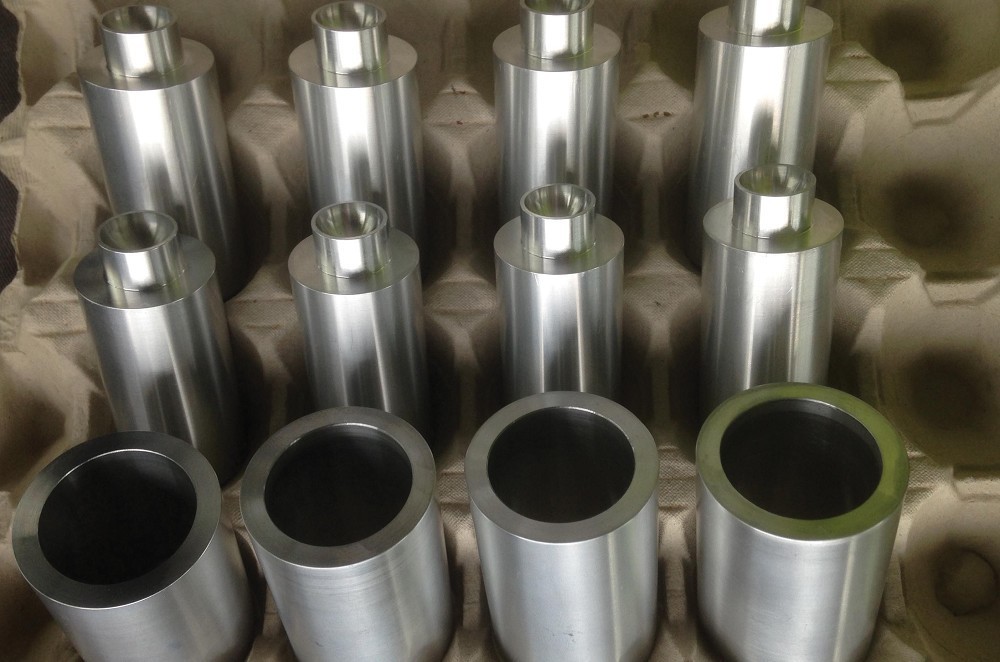 Remarkably, I found some aluminium tube in my dad’s garage which by some miracle was the exact size needed for the presses to slip inside keeping it all perfectly centred
Remarkably, I found some aluminium tube in my dad’s garage which by some miracle was the exact size needed for the presses to slip inside keeping it all perfectly centredFirstly, I got the sides of the spheres machined down to within a fraction of a millimetre of their edge which gave me a great cutting edge that would get rid of the large flat ring of excess paste in the roller. Remarkably, I also then found some aluminium tube in my dad’s garage which by some miracle was the exact size needed for the presses to slip inside keeping it all perfectly centred.
What amazed me most about it was the ‘seam’ where the two pieces of paste were joined around the corkball. Following just a quick whizz round in the palm of your hands, no joining line was evident and even when there was, the boiling process eliminated any chance of the bait splitting. I used this for all my corkball hookbait making for many years and although it wasn’t that user-friendly it was just so quick and easy. As long as I had some paste in the freezer, I could defrost it and roll twenty or thirty baits in a matter of minutes; all exactly the same size, all with no air gaps and with perfectly centred corkballs.
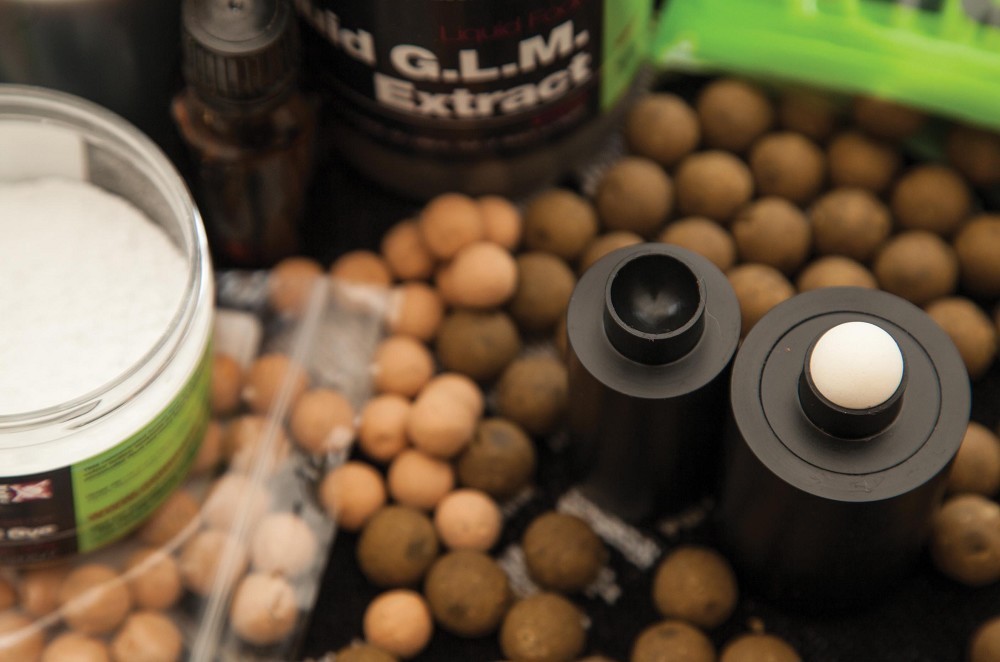 It would allow me to tweak my hookbaits and maybe add more liquid or different ingredients so they were personally tweaked for my approach
It would allow me to tweak my hookbaits and maybe add more liquid or different ingredients so they were personally tweaked for my approachI showed the little aluminium designed version to Ian Moore at CC Moore and he’d always said that it was good, removed a real headache from rolling and was an idea I should do something with.
I liked my little pop-up maker, but had no real interest in sharing it with anyone else… How things change! I got married and had kids and suddenly getting out carp fishing was just a distant memory. It did, however, give me a chance to mess around with the pop-up maker and I soon realised you could do a lot more with it than expected. Ian told me it was something he was interested in for his company and so I gave it a bit of a redesign to produce something that was easy to use and much more saleable. This entailed making it larger and going through a process of research to find the best non-stick materials for bait removal whilst getting the tiny clearances machined accurately. First prototypes were aluminium again, but we found that the wear of metal against metal caused galling (metal dust) and that idea was scrapped… plastic it was!
We settled on a material that amongst its many great properties, including being lightweight and hardwearing, was its low co-efficient of friction which allowed the two shafts with the half spheres on to move easily in their sleeve without getting stuck but also stopped pastes sticking in the hookbait-forming moulds. Different sizes of cutting jaws were experimented with until we found the perfect size to score or completely cut the excess paste away whilst retaining its core strength.
Almost six years since I’d first machined down that original lump of aluminium we had a product that we, and the many very experienced carp anglers we showed it to, believe it’s the future of homemade corkball hookbait making, be it for the beginner or the most experienced anglers out there!
What can you do with it?
Well, first and foremost it will make perfect corkball pop-ups and corkball wafters from just about any paste. You can make baits with the thinnest of skins, even down to 1mm if you so wish.
It will also make a variety of unique hookbaits, like half and half corkball pop-ups or wafters i.e. if you’re baiting with XXX and Tuna, you can make a bait that’s half XXX, half Tuna still with a corkball inside.
If you normally like tipping off your hookbaits with rubber corn or another hi-viz option designed to tempt sight-feeding fish, you can easily add a bright or fluoro spot on your favourite boilie corkball hookbait and use it on a Chod or Hinge. You can also mix different pastes together to create swirly baits or even make quick bottom baits with your favourite hard hookbait mix, without the need for paste guns and rolling tables. Once you start using it, you realise the ideas are endless…
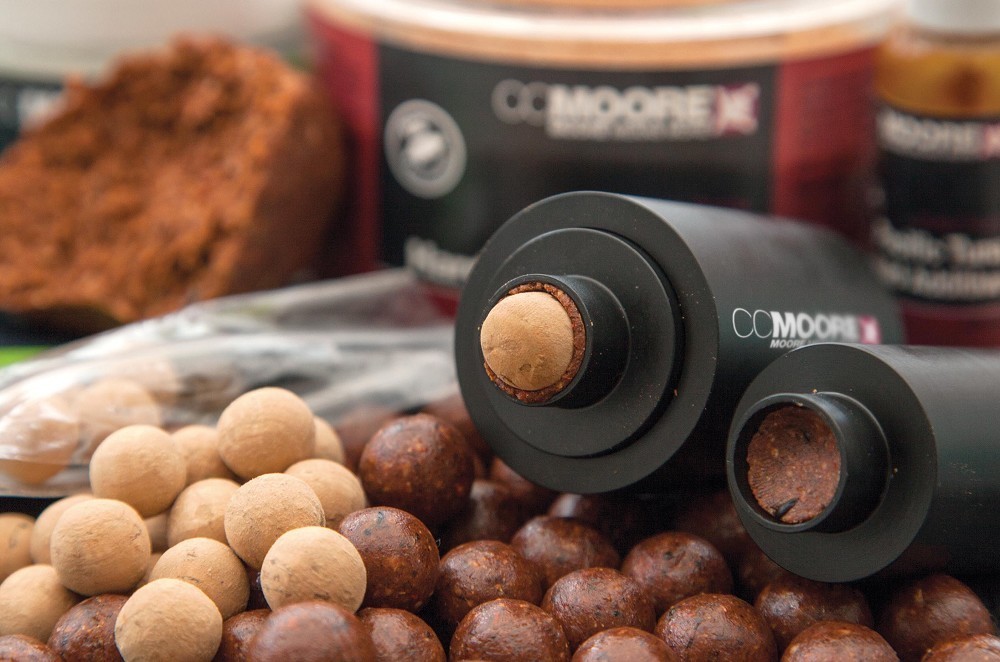 Almost six years since I’d first machined down that original lump of aluminium we had a product that we and the many very experienced carp anglers we showed it to believe it’s the future of homemade corkball hookbait making
Almost six years since I’d first machined down that original lump of aluminium we had a product that we and the many very experienced carp anglers we showed it to believe it’s the future of homemade corkball hookbait makingHow does it work?
It’s best used on a flat surface, a table or, if you’re at the lake you can do it on your tackle box.
1. Start with filling the cups to about level to the jaws with your chosen paste.
2. Place your corkball in one side as centrally as you can and press it in firmly.
3. Place the sleeve so it just lips over the shaft with the corkball on.
4. Engage the other shaft and holding horizontally in front of you and keeping the sleeve central, squeeze together with light pressure.
5. Finish by rotating the shafts backwards and forwards a few times.
6. Pull either shaft out and take the sleeve off to reveal the rolled corkball hookbait.
7. Run your finger around the jaws to remove the excess paste which will have been cut away.
8. Give the hookbait a quick whizz round in your hands and you have a perfect corkball hookbait.
Boiling
I feel that bait boiling times are a personal thing. The longer you boil them, the harder they will be, but the more liquid attractors are lost. Personally, I boil corkball pop-ups for 60 seconds and wafters for 90 seconds.
Buoyancy levels
As an example, I found that to make a CC Moore Odyssey XXX wafter in 15mm size requires a 10mm corkball, and using my normal hook size and patterns requires a No.6 split shot pinched onto the Hair under the bait. This is one of the greatest things about the roller, you can experiment so easily, using different sized corkballs or maybe slightly more base mix to make the bait slightly heavier. There are so many worthwhile little rolling experiments that can help achieve that critical hookbait presentation we are all after.
Mix basics
As with all corkball pop-up and hookbait making, base mixes should contain 10% egg albumen and should be sieved thoroughly to remove any larger items in the mix. Fresh eggs should be used and the final paste should be soft, malleable and not sticky. This roller works beautifully when the paste is surprisingly dry!
All the CC Moore boilie hard hookbait mixes and pop-up mixes work superbly in the roller creating perfect, identical hookbaits every time. It’s currently being made for rolling 15 and 18mm baits but I’m sure there will be smaller and larger sizes available soon.
I’m glad to say that gone are the days of working out paste amounts for your pop-ups to get them the right size, then often giving up and buying an expensive tub of ready-mades. Like me, I am sure you’ll find this product will save you both time and money and allow you to endlessly experiment with customer hookbaits; and when that big scaly beast rolls over the net you’ll get the extra satisfaction knowing you caught it on a hookbait you made yourself making that catch just that bit more special.





